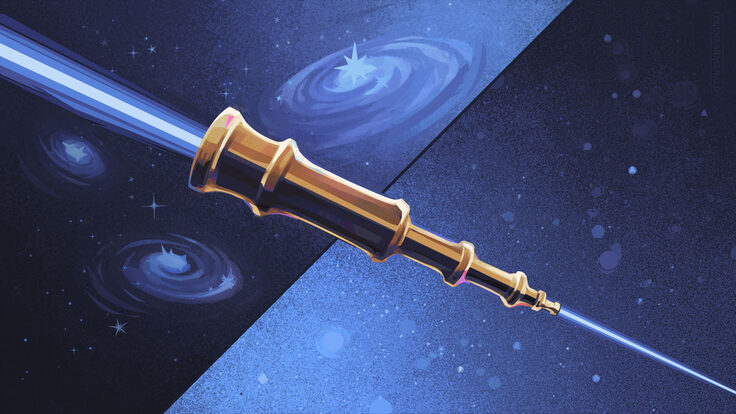
Housed 700 meters below ground in a salt basin at the Department of Energy's Waste Isolation Pilot Plant (WIPP), EXO-200 is isolated from cosmic rays and other sources of natural radioactivity. (Credit: EXO/WIPP/SLAC)
A neutrino is a fascinating particle: its mass is extremely small (and an accurate measurement of it remains elusive), it zips through the universe very close to the speed of light, rarely interacting with other matter, and—perhaps most intriguing of all—it could possibly be its own antiparticle.
To shed light on whether or not the neutrino and the antineutrino are one, the EXO-200 collaboration, led by Stanford University and SLAC National Accelerator Laboratory, has conducted an elaborate experiment 700 meters below ground in a New Mexico salt basin, searching for a process that’s only possible if the neutrino and antineutrino are indeed the same.
Yesterday, they released their first results: they’ve seen nothing.
And that’s not a bad thing. A “null” result can actually be quite exciting. “It’s great news to say we see nothing,” says Giorgio Gratta, a Stanford professor and spokesperson for EXO-200, in the SLAC press release.
By not seeing this process, called "neutrinoless double-beta decay," EXO-200—with its unprecedented sensitivity—was able to all but disprove a previous, highly controversial experiment that claimed to have detected the decay.
The EXO collaboration has also determined that the neutrino’s mass is less than 140 to 380 thousandths of an electronvolt (in other words, at least 3.5 million times smaller than the electron).
In the coming years, the EXO collaboration will continue its search for neutrinoless double-beta decay, seeking to learn more about this fascinating but elusive particle by collecting additional data and, perhaps, expanding the search using a much larger experimental setup.






